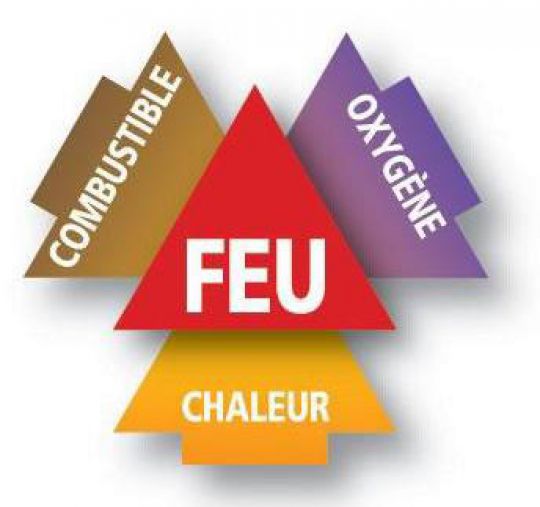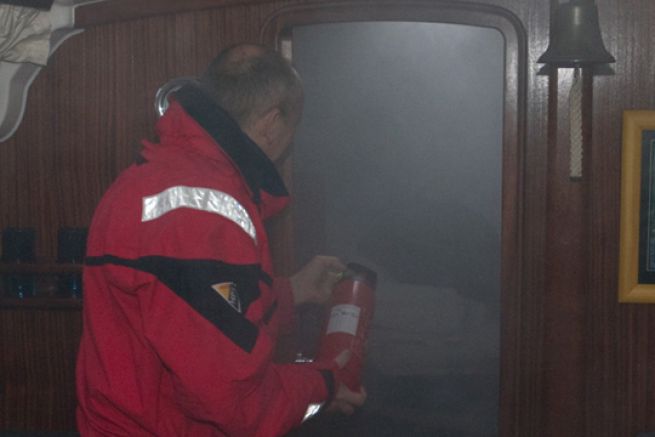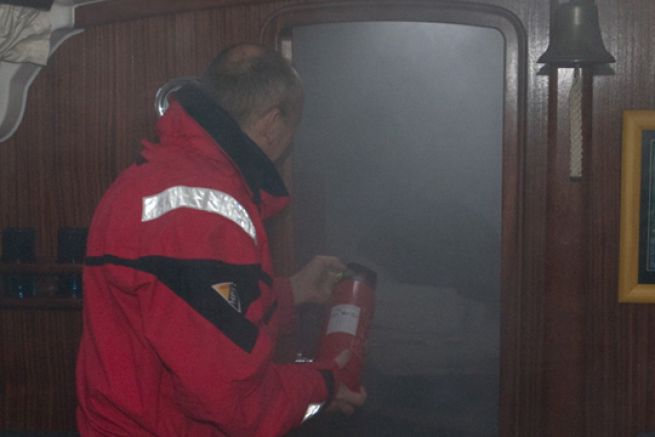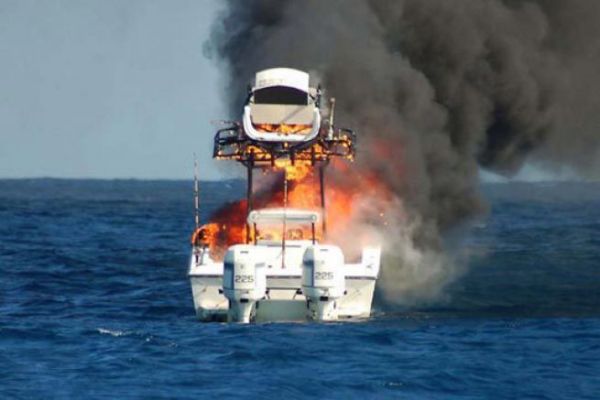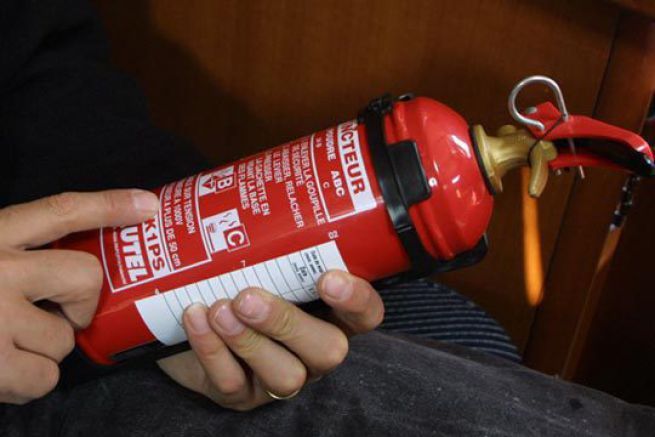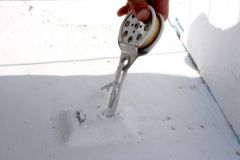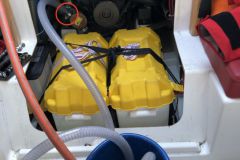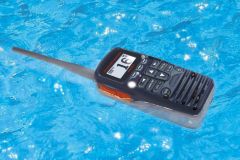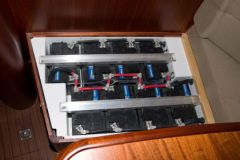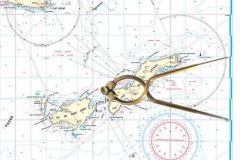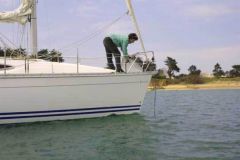A fire on a boat is not inevitable. Even if it is a dangerous emergency, a little knowledge about fire fighting, the choice and handling of fire extinguishers, helps to avoid basic mistakes.
A bad example not to be followed!
A short circuit in the engine wiring harness ignites the hot oil escaping from the improperly sealed rocker cover. In front of the smoke that escapes, a crew member opens the engine hood.
- Error #1 Do not supply oxygen to a fire. This supply of fresh air causes the flames to grow. On the fire that now invaded the entire hold, the crew member threw a bucket of water.
- Error #2 On liquid fires (fuel, oil...), do not water.
The poorly cleaned bilges are filled with oil. The sprays of water spilled the burning oil all over the hold. The walls start to catch fire, a fire fuelled by fuel coming directly from the tank. - Error #3 : fuel supplies must be cut off.
In front of the smoke that invades the cabin, access to the VHF to call for help is no longer possible. There is only one solution left: abandon the ship...
What should have been done...
By being better prepared, this disaster scenario could have turned into a simple disaster. In front of the smoke coming out of the engine hold, without opening it, the crew member strikes a fire extinguisher using the safety sand made mandatory by law, quickly smothering the fire. We find ourselves even if it means cleaning the hold and engine properly and restarting the wiring harness. Nothing compared to the loss of the boat...
Causes of fire
To start a fire, you need three elements. Remove one of the three and the fire goes out.
- A fuel: There is no shortage of them on our boats: gas, petrol, wood, polyester..
- Energy: a spark, a flame, a strong heat
- An oxidizer: as far as we are concerned, the oxygen in the air
